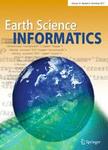版权所有:内蒙古大学图书馆 技术提供:维普资讯• 智图
内蒙古自治区呼和浩特市赛罕区大学西街235号 邮编: 010021

作者机构:Univ Tehran Fac Geog Dept Remote Sensing & GIS Tehran Iran Golestan Univ Environm Hazard Res Inst Hydroinformat Res Grp Gorgan Iran Golestan Univ Fac Engn Dept Surveying Engn Aliabad Katoul Iran GeoForsch Zentrum Potsdam GFZ Haus E Sekt 2 1Telegrafenberg D-14473 Potsdam Germany GFZ German Res Ctr Geosci Helmholtz Ctr Potsdam Potsdam Germany Leibniz Univ Hannover Inst Photogrammetry & Geoinformat Fac Civil Engn & Geodet Sci Hannover Germany
出 版 物:《EARTH SCIENCE INFORMATICS》 (Earth Sci. Informatics)
年 卷 期:2025年第18卷第1期
页 面:1-24页
核心收录:
学科分类:07[理学] 0708[理学-地球物理学] 0812[工学-计算机科学与技术(可授工学、理学学位)]
主 题:RUSLE Non-convex optimization Whale algorithm Soil erosion Sediment yield TLS-VCE
摘 要:In this research, by proposing an improved metaheuristic algorithm, it will be shown that the results of empirical soil erosion models can be more accurate by integrating with more advanced algorithms that can fill the limitations of previous methods. Modelling Revised Universal Soil Loss Equation (RUSLE) in combination with Sediment delivery ratio (RUSLE_SDR) in Taleghan watershed, located in the north of Iran, is the case study of this research. Two non-convex optimization methods are applied to construct the rainfall-runoff erosivity surface using rainfall data and Digital Elevation Model (DEM) instead of traditional interpolation methods since in fact it involves a non-convex target function due to existence of the random observed quantities which appear in all parts of the model. The first method to find the optimal solution is based on Whale method as a metaheuristic approach. One of the main advantages of the Whale is solving non-convex optimization problems where analytical methods may get stuck in a local minimum. As one may not have perfect information about the corresponding stochastic model, the second method is a new Whale algorithm based on total least square- variance components estimation (TLS-VCE) in which variance matrices are estimated during the non-convex optimization. The rates of soil erosion and sediment yield are estimated by RUSLE_SDR using three methods: the ordinary least-squares (LS) method, the whale algorithm, and the proposed (VCE_whale) algorithm. The modeling results using the three methods are compared with sediment yield measured at the hydrometric station. The results show that the VCE_whale algorithm (with a relative error of 3.12%) performs better than either the whale method (with a relative error of 5.46%) or the LS method (with a relative error of 6.88%). The whale algorithm also performs better than the LS.